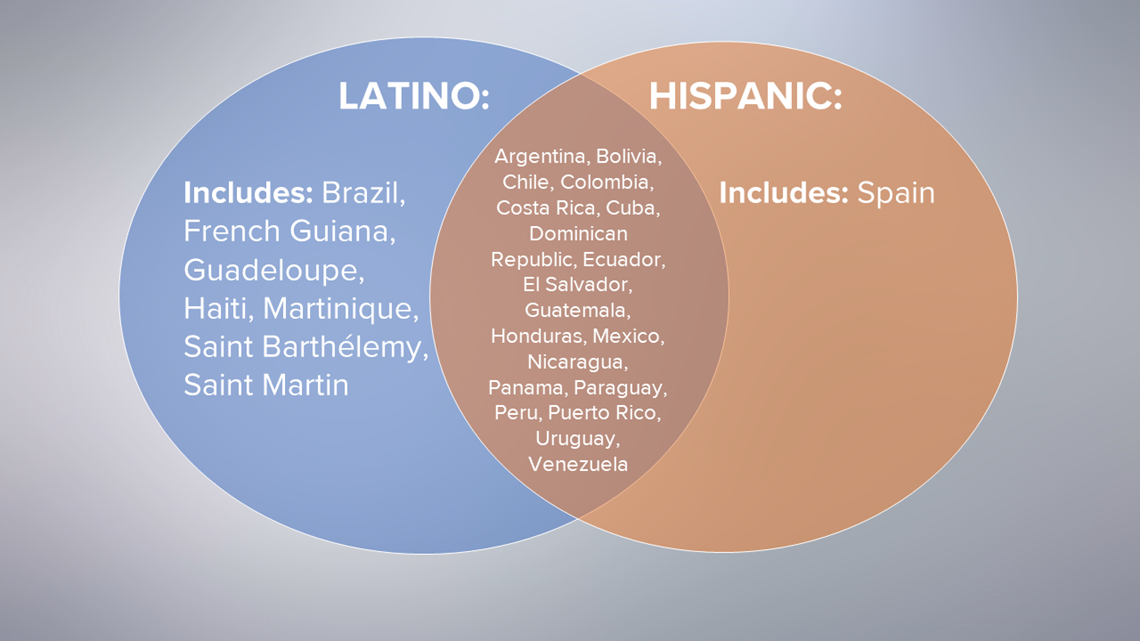Hispanic and Latino refer to people from or have ancestry in Spanish-speaking countries. The gender-neutral term Latinx has also been growing in use. Hispanics can be of any race or origin, but the majority are Mexican, Puerto Rican and Cuban. Many immigrants from Brazil, Equatorial Guinea and other Spanish-speaking countries outside the Americas do not consider themselves Hispanic.
Definition
Table of Contents
Traditionally, Hispanic has been considered a race-neutral category. It groups people based on the language they or their ancestors speak, and it is related to, but not the same as, ethnicity, which groups people based on their culture. People who use the word Hispanic can range from people who are primarily Mexican to those who are largely Puerto Rican and everything in between. There has been a movement lately toward Latino as the preferred term for people with Hispanic heritage.
The Latino Movement is largely driven by a desire to avoid the negative connotations associated with Hispanic and move away from a racialized identification system. For example, Hispanics carry the sense of being a maid or an agricultural laborer, while Latinos are more positive and uplifting.
It is important to consider whether your chosen term will impact your audience. For instance, Hispanics may be the best choice if you are working with a predominantly Hispanic group. However, if you aim to reach a diverse audience, Latino may be a more suitable term. It is especially true if you are working with an audience whose members identify as Hispanic and non-Hispanic. It is also important to remember that the U.S.
Census and government surveys ask people to self-identify as either Hispanic or Latino.
Origin
Hispanic people have ancestral roots in any Spanish-speaking countries, are located in Latin America (including Mexico, Puerto Rico, Cuba and other Caribbean islands), or Spain. It is also possible for a Hispanic to be of mixed race, including White, Black, Native American or Asian. In the United States, many Hispanics use both terms to describe themselves. Often, it is simply a matter of preference. When surveyed by Pew Research Center, more than half of Hispanics and Latinos say they prefer to be identified as Hispanic rather than Latino.
The word Hispanic was chosen by a diverse group of federal employees charged with selecting a term for the 1980 U.S. Census to distinguish people with Mexican and other Spanish-speaking heritage from those defined as white, black or American Indian. The group settled on Hispanic as a more inclusive alternative to the antiquated racial categories. Since then, the phrase has become widely used. The decision to choose Hispanic was made because the word encompasses more than just a specific race and refers to an entire geographic region.
— Latin America and the Caribbean. Despite this, some scholars have avoided the term Hispanic because it carries a history of colonialism, slavery and genocide.
Meaning
The term Hispanic was created by a group of activists in the 1970s to develop a federally defined heritage category encompassing the growing populations of Mexican, Puerto Rican and Cuban Americans. They sought a word closer to the definition of ethnicity than race. As such, it’s more inclusive than a single race.
But the use of Hispanic proved problematic because it excluded people from South America, where the primary language is Portuguese (and not Spanish). And it also excludes people who were in contact with the Spanish Empire but didn’t speak Spanish, such as those who spoke the indigenous languages or fought for independence from Spain in the Caribbean and South America.
While the terms Latino and Latina and the gender-neutral Latinx have emerged as alternatives, these are viewed by many as less preferred options because they don’t have the same cultural associations as Hispanics. And they still don’t provide a clear geographical distinction because a person from Brazil who speaks Portuguese may consider themselves Latino rather than Hispanic. When in doubt, ask the person how they prefer to be referred. And when in doubt, it’s always best to choose a descriptor that honors the individual’s heritage and culture. Then, it’s important to continue using that descriptor in everyday life.
Examples
In the United States, Hispanic and Latino are commonly used terms that refer to a broad category of people. These people share a common heritage, language and culture that spans Mexico, Puerto Rico, Cuba, Colombia, El Salvador, Argentina, the Dominican
Republic and other parts of Central and South America. However, there is some debate about whether the term should include people from Spanish-speaking countries outside of those regions, like Brazil and Spain. Hispanic and Latino terms appear on government records and official documents, such as birth certificates and school registration forms. The words have been around for a long time but were only sometimes used similarly. In the 1970s, activists pushed for Hispanic and other ethnic categories to be included on census forms. The 1980 census was the first to ask respondents to identify as Hispanic or Latino in addition to their race.
Many people use both terms, depending on their preferences and the context in which they are used. The word Latino is sometimes preferred in more urban areas and on the coasts, while Hispanic is more commonly used in the southern United States, including Florida and Texas. The term Hispanic is also used to describe people who are multiracial, with a mix of white and non-white ancestry. Another emerging term is Latinx, which has a gender-neutral meaning and is often used as an alternative to Hispanics and Latinos to support people in the LGBTQIA community.

